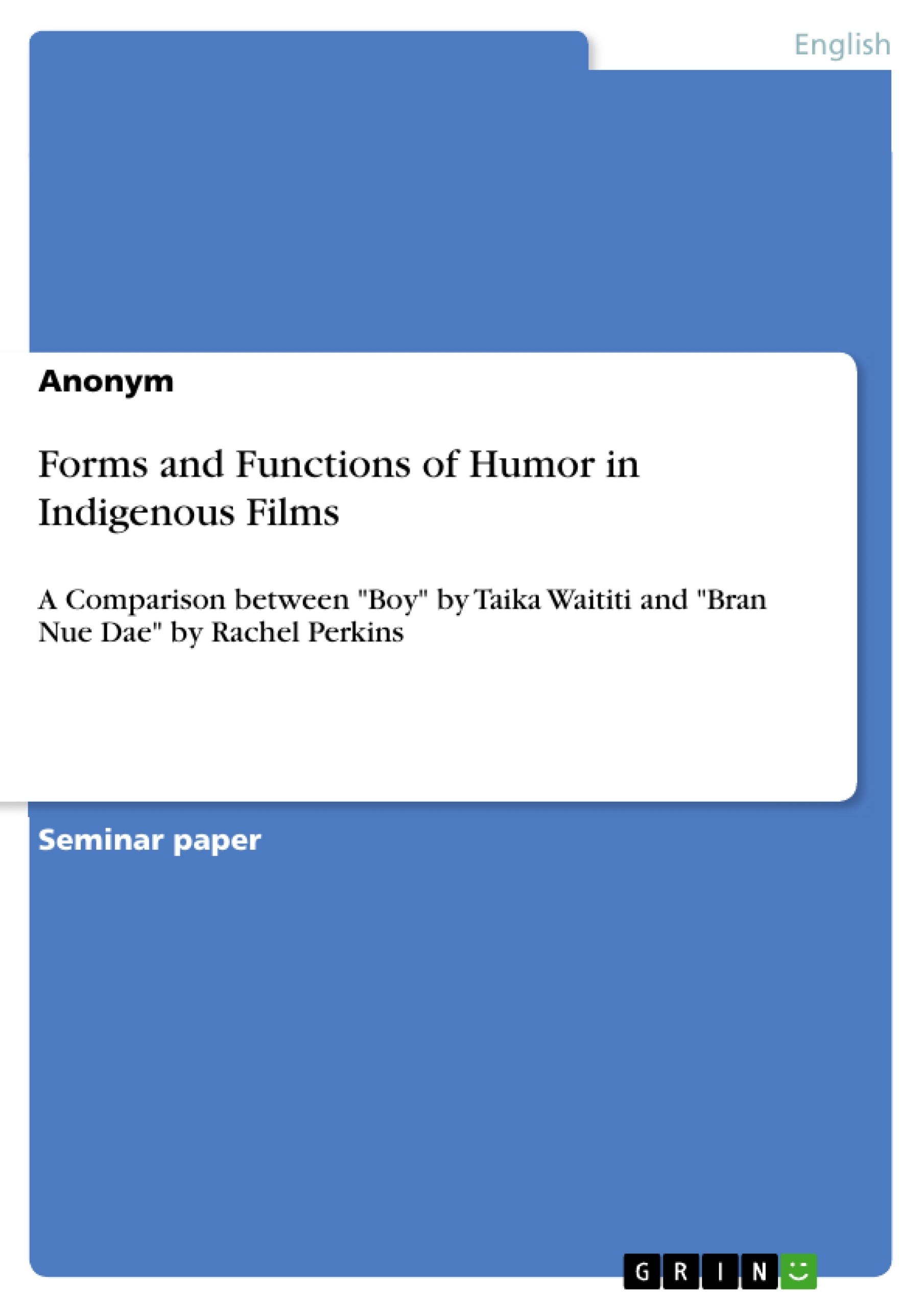This term paper focuses on the comparison between two Indigenous films, "Boy" by Taika Waititi and "Bran Nue Dae" by Rachel Perkins on the basis of forms and functions of humor that are presented in both films.
Comparing these two films, the viewer might immediately ask the question why the depiction of historical trauma of the two peoples, Māori and Aborigines, is presented in a comical manner. These films are classified as "dramedies". It does not mean that a dramedy is a comedy with dramatic elements or vice versa, it’s a genre of drama that is defined by stories focusing on character development, intense emotions and inner conflict as the primary source of plot. In these films, humor has been selected as a main tool to illustrate the problems of these two nations that have been confronted with social segregation in New Zeeland and Australia. For this reason, such a tragicomically represented humor serves as a difficulty for its appropriate perception on the viewers’ part.
In the movies, the plot revolves in 1969 in Australia and in 1984 in New Zealand, so explicitly in the times of the national revival of Aborigines and Maori. Then, after centuries of discrimination, they were given full rights and became full-fledged members of society. So, a mix of tragedy and comedy is not a coincidence since the Indigenous people who have come through a lot of tragedy had then a reason to cheerfully celebrate their newly obtained equal status.
Table of Contents
- Introduction
- Forms and Functions of Humor
- Analysis of Humor in “Boy”
- Historical Background
- Scene Analysis
- Father and Son - Who am I?
- Haka Dance
- Michael Jackson
- Analysis of Humor in \"Bran Nue Dae\"
- Historical Background
- Scene Analysis
- \"Nothing I Would Rather Be\"
- Prison
- The Condom Tree
- Critical Reflection on both films
Objectives and Key Themes
This term paper analyzes the use of humor in two Indigenous films, "Boy" by Taika Waititi and "Bran Nue Dae" by Rachel Perkins. The goal is to compare and contrast the forms and functions of humor presented in both films and understand how it reflects the historical and social realities of the Māori and Aboriginal communities.
- The use of humor as a coping mechanism for historical trauma and social marginalization experienced by Indigenous communities.
- The representation of Indigenous characters and their perspectives through comedic elements.
- The intersection of humor and social commentary, exploring themes of identity, cultural resilience, and social justice.
- The function of humor in challenging stereotypes and promoting a more nuanced understanding of Indigenous experiences.
Chapter Summaries
The introduction establishes the context of the study, presenting the two films and their focus on humor as a means of exploring Indigenous experiences. It highlights the contrasting approaches to depicting historical trauma: "Boy" presents a more serious and introspective perspective while "Bran Nue Dae" employs a more lighthearted and humorous tone.
Chapter 2 delves into the forms and functions of humor, exploring the inter-character and recipient levels of communication in film discourse. It examines how humor can be employed for entertainment and amusement, and discusses the importance of plausibility and realism in its application within the film narrative.
Chapter 3 analyzes the humor in "Boy," focusing on its historical context and specific scenes. It examines the use of black humor to challenge stereotypes and depict the complexities of identity formation within the film.
Chapter 4 focuses on the humor present in "Bran Nue Dae," exploring its historical background and specific scenes. It discusses how the film utilizes humor to celebrate cultural resilience and promote social awareness.
Keywords
This term paper explores the use of humor in Indigenous films, focusing on the specific examples of "Boy" and "Bran Nue Dae." Key concepts include forms and functions of humor, black humor, Indigenous representation, cultural resilience, historical trauma, social commentary, and challenging stereotypes.
- Citar trabajo
- Anonym (Autor), 2017, Forms and Functions of Humor in Indigenous Films, Múnich, GRIN Verlag, https://www.grin.com/document/488868



